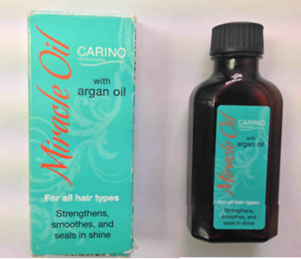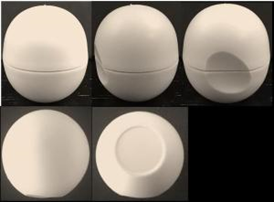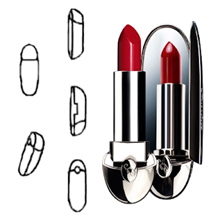Beauty dupes are big business – search "beauty dupe for… " any luxury skincare product and you will see countless results. These range from dedicated dupe advisory sites and social media channels, through to mainstream media recommending low-cost alternatives to premium skincare products, with headlines such as "The budget beauty ‘dupes’ that really work" (The Telegraph) and "Best makeup dupes of high end beauty products 2023" (The Evening Standard).
The availability of lower cost alternatives to premium products is nothing new. Just as in fashion, trends are set by industry leaders catering to high-end customers, but they become established once followed by brands priced to appeal to a broader market. However, such products are increasingly promoted as like-for-like alternatives, using the premium brand's name, image and products as a direct reference point. Where is the line between legitimate inspiration and infringement of intellectual property (IP) rights? For luxury brand owners, what can be done to challenge problematic dupes? For mass market brands, how can they stay on the right side of the line?
Packaging and product design dupes
This is the classic example of a beauty dupe, where a product is designed to visually emulate an existing leading product, perhaps in terms of its external packaging or the visual design of the product itself (such as the design and colour scheme of a make-up palette). These types of dupes are not necessarily intended to emulate the effect and formulation of the original product (although they might try and do that as well). Generally speaking, they are designed to 'call to mind' the original product in terms of style and 'get-up', without suggesting that they are one-and-the-same.
These types of "copycat" products are not limited to the beauty sector and have been a feature of the food and FMCG industries for some time. They have historically been dealt with under the law of "passing off"; one of the leading cases is a 1997 decision concerning the famous PENGUIN chocolate bar vs. a supermarket own-brand PUFFIN range. To succeed in passing off, consumers must be deceived into believing that the copycat product is the real deal, or at least that there is a commercial connection. Over time, however, copycat and dupe brands (across all sectors) have sought to differentiate their products perhaps just enough, whilst consumers may have become more attuned to copycats and own-brand alternatives. Accordingly, it may be difficult for brand owners to meet the test for consumer deception.
In a beauty context, this came to the fore in 2014 in a case concerning the Moroccan Oil hair product against an Aldi own-brand product called Miracle Oil. Aldi successfully defended a claim of passing off, by showing that consumers purchasing its product did not believe they were buying the original Moroccan Oil product, or that there was any commercial connection between the two. Aldi was found to have been successful in creating a product which brought to mind Moroccan Oil, and which might be thought of as "cheeky" and "living dangerously", but the judge found that this was not unlawful. Some commentators have called for changes to the law to deal with the issues of copycats, noting that other countries (such as Germany) offer greater protection to brand owners under unfair competition regimes.

Moroccan Oil

Miracle Oil
Copyright is another relevant right, which may be available to protect product or packaging designs as 'artistic works'. The allegedly infringed design must be itself 'original' and a 'substantial part' must have been copied, which may raise evidential questions in practice. A copyright infringement claim was successfully brought by the Charlotte Tilbury brand against Aldi, concerning the below bronze and highlight palette. The design of the palette was sufficiently original, having been inspired by art deco motifs and designed by intellectually creative choices, and the Aldi design was sufficiently close that the Court was prepared to infer copying (which could not be rebutted).
In other cases, however, it may be more difficult for beauty products to demonstrate sufficient originality in product packaging to qualify as an 'artistic work'.
Other IP rights which may also apply against product/packaging design dupes include design rights and trade marks. Design rights protect the shape and visual appearance of a product, and may be registered or unregistered – these could apply against the shape of a product or its packaging. Trade mark law may also be relevant; generally this will apply where a brand name or logo is emulated, but trade marks can also be used to protect shapes. Registration of such shape marks can be challenging, as encountered by EOS which failed to register its unusual egg-shaped lip balm as a 3D trade mark – although Guerlain did manage to successfully register the bullet-shape of its Rouge G lipstick case.

EOS Lip Blam

Guerlain Rogue G Lipstick Case
Formulation dupes
Highly innovative technology, processes and/or formulations may be eligible for patent protection where they are new and sufficiently innovative. Patent protection can be complex and expensive to obtain but, once registered, is a valuable enforcement (and exploitable) asset (in the UK patents can be protected for up to 20 years). However once patent protection has been obtained, it does not prevent third parties producing products which they claim will have the same effect, as long as that product does not infringe the patent. For example, haircare brand Olaplex is reported to have 160 patents worldwide, but there are multiple products which claim the same bond smoothing and protecting effects (although which are not necessarily as effective).
For products which are not patent protected, there may be limited protection to the underlying formulation. There is nothing unlawful in third parties seeking to reverse-engineer the formulation, by analysing the ingredient list and the product itself, in order to produce a similar product. So, if one brand offers a skincare serum with a particular combination of ingredients which claims to have certain effects, another brand may seek to compete by marketing a similar serum – regardless of whether the formulation was created independently or was copied – provided that there is no relevant patent, and no IP rights are infringed in the marketing of the competing product. One caveat is where the person or entity reverse engineering the product is not a third party, but someone who has knowledge of the original brand's confidential information (e.g. an ex-employee or ex-manufacturer). If such a person or entity reverse engineers a product by using their particular insight based on confidential information, then the process of reverse engineering the product may amount to a breach of confidence.
Products marketed as dupes
As we have seen, where a formulation has been copied or designed to have a similar effect, this may not be unlawful in itself, unless the marketing of the product infringes any IP rights.
This is most clearly demonstrated by fragrance dupes, which seem to be having a renaissance moment. Fragrance dupes are classic examples of products which have been reverse-engineered to emulate an existing product. While the Dutch courts have previously found that copyright can protect the smell of a perfume, this is unlikely to be maintained following a 2019 CJEU decision confirming that copyright cannot subsist in the taste of certain flavours. The main difficulty for such businesses is in how to market their products without referencing the original brand in a manner which infringes trade marks or other IP rights. For example, in 2009, fragrance manufacturer Bellure was found to have infringed L'Oréal's trade mark rights in comparative advertisements for its "smell-alike" perfumes. Modern fragrance dupe brands seek to avoid legal action by sticking to language such as "inspired by" and taking a cautious approach to the promotion of their products.
In fact, most brands which are routinely endorsed as 'quality' dupes don't actively market themselves as such. Many leading operators with accessible prices succeed in having their products endorsed as dupes by social media influencers, the mainstream media, and dedicated dupe recommendation sites without ever directly laying claim to being a dupe themselves. Such brands may successfully emulate product/packaging design and/or formulation efficacy, whilst looking to stay within the law, and then sit back and let market commentators (as well as consumers on social media) draw the analogy with designer products. This is a strategic approach which can be used to great effect, as there may be limited redress available to designer brands who feel they have been emulated (though it will be important evidence for the designer brand to collate if it does decide to take action).
What else can be done?
For a designer or market-leading premium brand who feels sales are being impacted by the dupe industry, it can feel that there are limited enforcement options available. Moreover, there is a risk that public enforcement action could backfire, by drawing consumer attention to the availability of lower cost alternatives and inadvertently diverting sales.
Take inspiration then from Olaplex, who took direct action in a marketing campaign to bring the spotlight on dupes. Olaplex launched Oladupé, an invented product that really contained Olaplex's bestselling No. 3 Hair Perfector. The brand distributed bottles of Oladupé to beauty and haircare influencers, resulting in extensive social media coverage, before revealing that Oladupé was the real product disguised as a dupe. The marketing campaign was reported to have generated $1.1MM in global earned media value (EMV), whilst cementing Olaplex's sought-after status.
It is also worth reviewing employment contracts and commercial agreements with suppliers, laboratories and other third parties who have access to product formulations, to ensure that all confidentiality and exclusivity provisions are as watertight as possible.
Finally: one approach is to take it as a compliment. Imitation – whilst undesirable – is nevertheless a form of flattery. The fact that a product is sufficiently desirable to be copied is an endorsement that it is sought-after and in demand. As in the fashion industry, a certain degree of commercial success brings with it a degree of emulation. What is key is active monitoring, to ensure that in instances where a copycat or dupe does cross the line, prompt and decisive enforcement action is taken.